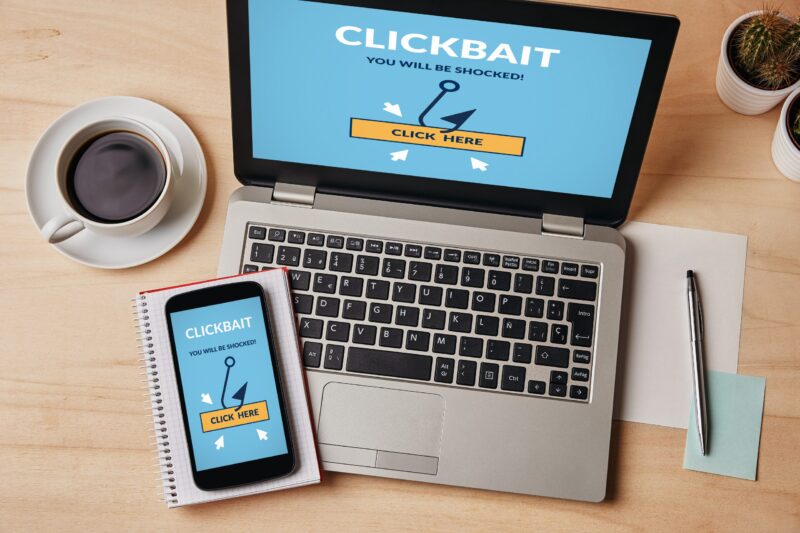Have you ever shared a sensational headline only to find out later it wasn’t accurate? A staggering 59% of links shared on social media are never actually clicked by those sharing them. Let that sink in. People often share without verifying. Are you one of them?
Key Points:
- Always read the full article before sharing.
- Use tools to identify manipulated content.
- Compare information across multiple sources.
- Learn to identify credible sources.
- Watch for emotional triggers or sensational claims.
Start by Reading the Full Article

Sharing content without reading the full piece is one of the easiest ways misinformation spreads. Headlines are crafted to grab attention, often leaving out critical details. The body of the article may provide a completely different perspective or additional context that alters the message.
Using tools like AI Detector ensures the content you’re engaging with is authentic. This platform not only identifies AI-generated text but also highlights manipulative content. By taking this extra step, you can avoid spreading potentially harmful or misleading information.
To make this a habit, set a rule for yourself: never share anything you haven’t fully read. It’s a simple yet effective way to uphold the integrity of the information ecosystem.
Check the Source’s Credibility
Not all websites or publishers hold the same standards for accuracy. Trustworthy sources typically have a reputation for well-researched, balanced reporting. But how do you spot credible content?
- Look for Author Details: If an article lacks author information, treat it with caution. Writers with expertise or professional credentials are more likely to produce reliable material.
- Search for References: Credible pieces include links or citations to back their claims.
- Evaluate the Domain: Websites with extensions like .gov or .edu are generally dependable. Commercial sites (.com) can also be reliable but need additional scrutiny.
A reliable source often goes beyond the minimum effort. They include updates or corrections and maintain transparency with their audience. These are hallmarks of platforms you can trust.
Avoid Emotional Traps

Content that heavily relies on emotional appeal is designed to elicit a reaction rather than inform. Sensational claims, exaggerated language, and emotionally charged words are common indicators of manipulation.
For example, phrases like “You won’t believe…” or “The shocking truth…” aim to provoke strong reactions. Instead of responding immediately, ask yourself:
- Does this seem exaggerated or outlandish?
- Are there factual details, or is it all emotional appeal?
Training yourself to spot these cues helps you maintain objectivity. Remember, responsible sharing starts with critical thinking.
Use Fact-Checking Websites
Fact-checking platforms are indispensable tools for verifying claims. They analyze news stories, social media posts, and viral content to separate fact from fiction. Some of the best options include:
- Snopes: A long-standing favorite for debunking myths and urban legends.
- FactCheck.org: Offers unbiased reviews of political and social claims.
- PolitiFact: Uses its Truth-O-Meter to rate the accuracy of statements.
These resources simplify verification by doing the investigative work for you. Make it a habit to consult them when you encounter questionable claims. A quick visit can save you from unknowingly spreading falsehoods.
Cross-Check Multiple Sources

A single source should never be your sole reference. Comparing the same story across multiple outlets provides a clearer picture of its validity. Consistency across reports often indicates reliability.
Steps to Cross-Check:
- Identify the key claim or fact in the article.
- Search for similar coverage on well-known and trusted platforms.
- Look for differences in details or emphasis to spot biases.
Diverse perspectives lead to a more informed understanding of any topic. They also help you recognize how framing influences perception.
Be Wary of Visual Manipulation

Photos and videos carry immense persuasive power, but they can also deceive. Technology has made it easier than ever to alter visuals convincingly.
Tools to Detect Manipulation:
- Reverse Image Search: Platforms like Google Images or TinEye can trace an image’s origin, revealing if it has been repurposed or altered.
- Examine Visual Details: Inconsistencies in lighting, shadows, or proportions often indicate tampering.
- Use Verified Accounts: Content shared by official accounts is less likely to be manipulated.
Visual verification is just as crucial as checking written content. By scrutinizing imagery, you can uncover attempts to mislead.
Question the Timing
Old stories often resurface with misleading implications. Outdated information can be shared as if it were recent, creating unnecessary confusion. Before reacting, confirm:
- The Publication Date: Ensure the story is still relevant.
- Current Context: Consider if circumstances have changed since the article was published.
Context matters. Verifying the timing of content ensures you’re not inadvertently spreading obsolete or irrelevant information.
Understand the Anatomy of Clickbait

Clickbait relies on psychological tricks to draw readers in. Knowing how it works helps you resist its pull. Common features include:
- Over-the-Top Claims: Phrases like “You won’t believe…” or “The best-kept secret…” are designed to create curiosity.
- Vague Headlines: Lack of detail forces you to click for answers.
- Emotional Language: Words meant to provoke outrage, excitement, or fear.
By recognizing these tactics, you can approach content with skepticism, protecting yourself and others from misinformation.
Why Fact-Checking is Crucial for Everyone
Misinformation’s impact goes beyond individual embarrassment. It can sway public opinion, harm reputations, and even influence elections. According to a study, false claims on social media are shared six times more often than accurate ones. Each share amplifies the problem.
By making fact-checking a priority, you become part of the solution. It’s not just about accuracy; it’s about fostering a culture of responsibility.
Develop a Fact-Checking Routine
Turning verification into a habit requires consistency and the right tools. Here’s how to integrate it into your daily life:
- Bookmark Key Resources: Keep AI detectors and fact-checking sites handy.
- Pause Before Sharing: Take a moment to verify before hitting “share.”
- Educate Your Circle: Share what you learn to encourage others to fact-check.
When you make verification a habit, it becomes second nature, ensuring the content you share is both accurate and valuable.
New Tools That Can Help Spot Fake News

Emerging technologies offer innovative ways to combat misinformation. Tools like browser extensions, apps, and advanced algorithms simplify the process.
- NewsGuard: Rates the credibility of news websites.
- Hoaxy: Visualizes the spread of claims on social media.
- CrowdTangle: Tracks how content is shared across platforms.
By embracing these tools, you stay ahead of misinformation trends and help promote accurate reporting.
The Role of Social Media in Misinformation
Social media platforms are both a blessing and a curse for information sharing. They amplify voices but also make it easier for falsehoods to spread. Recognizing the strengths and pitfalls of these platforms is essential.
Tips for Responsible Use:
- Follow reputable sources to curate a trustworthy feed.
- Report false information when you see it.
- Limit interactions with suspicious accounts.
When used responsibly, social media becomes a powerful tool for education rather than misinformation.
Conclusion
Before sharing a headline, pause and verify. A few extra minutes can prevent the spread of misinformation. Use tools, question claims, and rely on credible sources. Be part of the solution, not the problem. Informed sharing promotes a healthier, more truthful digital space for everyone.
Related Posts:
- Should You Take That Casino Bonus? Breaking Down the…
- Planning Your Everest Adventure – What You Need to…
- Legal Loopholes in Disability Claims: Closing the…
- How to Turn On Laptop Without Power Button? - 6 Easy Methods
- Building Your Online Presence ─ Easy Tactics to Gain…
- Why To Look For Customer Reviews Before Buying CBD Capsules?








